Explore Hamel
Hamel Nursery
Although a temporary nursery was established at Guilford in 1896, the Hamel nursery was the first permanent state nursery established in Western Australia in 1897.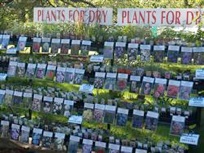
The Hamel Nursery has been here for more than 100 years.
The prisoners built the Hamel Barracks and cook house, which was turned into the Hamel Hall in 1908.
Between 1925 and 1957 a total of 4.5 million trees, of different varieties were produced at Hamel Nursery.
Flowers from the Hamel Nursery were sent to Perth for the flower show, to decorate the Premier’s Office.
The trees from the Nursery were sent all over the state:
- street or verge planting
- school grounds
- railway stations
- cemeteries
- and gardens
The Hamel grounds are still owned by the State Government. There were up to 1,500,000 trees grown at the Hamel Nursery each year.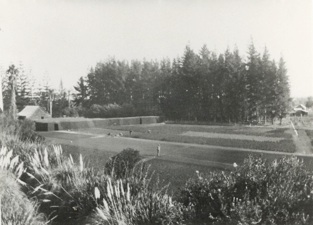
In 1917 the Nursery relocated west of the railway line. The reason for the move was because they could bring it closer to the Sampson Brook to avoid difficulties with pumping for irrigation.
Many of the trees and the other plants grown at Hamel, were planted in many well-known places throughout the state:
- King’s Park (Perth)
- Rottnest Island
- Karrakatta
- Fremantle Cemetery
In the first season of planting they raised 334,000 plants.
Some of the trees were provided to farmers for sheltering stock, pine seedlings raised at Hamel were sent to plantations in the south-west.
In 1966, there was an office built at the front of the nursery it was later used for storage.
Around 1903, the plantation was perhaps the oldest plantation in Western Australia (W.A).
Hamel Nursery’ Business relocated in late 2007 to Coolup.
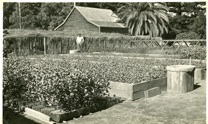
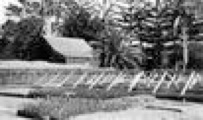
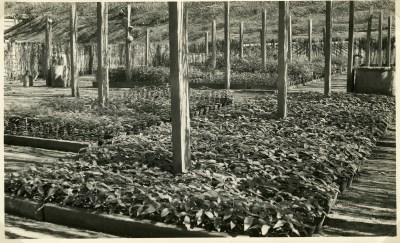
Photographs courtesy of D Ross
Hamel Townsite
Hamel was opened in the 1890s. It is in the Harvey Agricultural area in the Shire of Waroona (formerly Drakesbrook).
Hamel Settlement
In 1897 the WA Government established the first permanent State nursery in Hamel. The land was granted back to the WA Government when the original owner, Lancel Victor de Hamel died unexpectedly in Coolgardie. Hence the locality name.
The Hamel town site was gazetted in 1899 and in the following year, the Government Experimental Farm and Arboretum at Hamel had established operations. Houses were constructed for the nursery manager and other workers.
The nursery propagated plants for Kings Park, Perth Zoo, Rottnest Island, Perth Zoological Gardens, Hyde Park, Harold Boas Gardens and many more.
In 1898 the first Hamel town lots were offered for sale. These were taken up by Irish and Italian migrants, with potatoes being the main crops grown.
The railway was built in 1893, it serviced passengers, it had goods delivered for the residents, it took produce like potatoes and dairy produce to Metropolitan markets and the mail was also delivered by rail. The Hamel Railway Station was removed in 1977.
Wetland Walk Trail
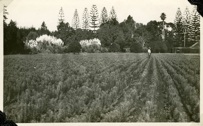 In the past years the Hamel Wetlands has just been a forest. In 2005 the pine plantation was chopped and the land owner, the department of environment and conservation, decided the wetlands should be a nature reserve. There is a Gazebo at the end of the trail where you can see ducks, birds, black swans and their babies. It is a 15 to 30 minute walk. Turn off the south west highway onto Cornucopia Street and into the exploring trail.
In the past years the Hamel Wetlands has just been a forest. In 2005 the pine plantation was chopped and the land owner, the department of environment and conservation, decided the wetlands should be a nature reserve. There is a Gazebo at the end of the trail where you can see ducks, birds, black swans and their babies. It is a 15 to 30 minute walk. Turn off the south west highway onto Cornucopia Street and into the exploring trail.
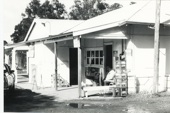 Hamel Shop
Hamel Shop
The Hamel shop was originally a farm house. In 1949 Italian migrants Michele Ferraro and son Guiseppe opened up the Hamel store. It was over the road from the old school and next to the Tennis Courts. The shop did well until it closed in 1980s.
The Tennis Courts
In the 1930s Bert and Jim Iseppi (brothers) built two tennis courts for local residents. They used ant hill material resourced from there farm. In the 1930s and 1940s the tennis courts were a gathering place for local residents. Now the courts have been grown over by vegetation and trees. You can see patches of the court are still there. The tree planting next to the courts were planted by the Waroona school children.
Hamel School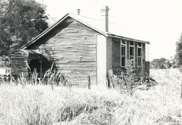
The Hamel School opened on 10 November 1905. It was located on the north east side of Fawcett Road; it was a one room wood and corrugated iron structure. After it opened 10 more children attended the school leaving only 24 at Waroona School. There were around 40 students in the Hamel school. There were teachers there one of them was Mr John Tonkin who became the premier of Western Australia. The school had a bomb shelter in World War 2. In 1944 when the school closed the students went to Waroona School by stock truck.
The Post Office
When train service was in operation, mail was sent by rail in and out. In 1965 and 1977 a post office was built inside the Hamel hall. In 1982 a post office was set up in at G Palmers house in Allowrie Street, Hamel The post office stopped operating in 1987.
Hamel Hall
In 1902 a prison working camp was built by the prisoners. It was meant to be the first out-station started under the Fremantle prison. For short term and near release prisoners in Western Australia. The prisoners worked on the nursery. In 1907 the prison had closed. In 1919 the former building was moved to where it is now in one piece. Left over buildings of the prison were demolished. The Hamel hall was used by the local school for concerts and fundraising events.
Hamel stops used to be an irrigation channel for farmers. It is a good place to visit still and see where the locals swam. Except no swimming is allowed now.
Photographs courtesy of D Ross & Waroona Historical Society
Hamel Wetlands
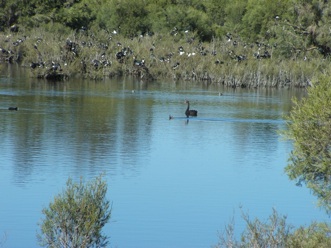 The Hamel Wetlands is a temporary lake, meaning that it is only wet for part of the year. The wetlands plants and animals are well adapted to the cycle of flooding and drying and after the rain, the wetlands come alive with birdlife, native fish, frogs and even crustaceans.
The Hamel Wetlands is a temporary lake, meaning that it is only wet for part of the year. The wetlands plants and animals are well adapted to the cycle of flooding and drying and after the rain, the wetlands come alive with birdlife, native fish, frogs and even crustaceans.
The wetland trail is 550m long and made of limestone. There are many great sights along the trail like five plaques telling you about the different plants and animals in the area. There are a few rules to take into mind when coming to the wetlands such as being quiet, not littering, not taking anything (photos should be your only souvenir), be careful where you step, no stepping on plants or animals, don’t feed the animals, follow the blue markers and no riding motorbikes on the trail please follow these to keep this beautiful place beautiful! Hamel wetlands have a picnic hut where you can sit in the shade and eat a picnic lunch while you watch the birds, listen to the many frogs and look at all of the pretty trees and flowers.
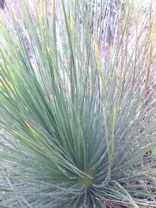
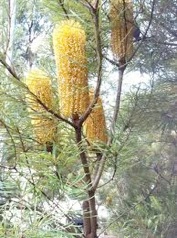
The wetlands are home to many different species of frogs such as the Quacking Frog, Motorbike Frog, Slender Tree Frog, Clicking Froglet, Lea’s Froglet, Moaning Frog and the Banjo Frog. Frog researchers have been trying hard to conserve these precious creatures by observing their behaviour and what they feed on.
The Aboriginal people value the wetlands because of its sources of food, water, medicine and its wildlife. Some ways they used the plants for food was soaking the yellow Marri blossoms in water and it then turns into a sweet drink, they ate a sugary substance that oozed from the trunk and also ate insect larvae that lived under the bark. The red gum that bleeds from the Marri tree and the seeds were eaten as cures for diarrhoea. The trees also provided shelter from the weather and sun.
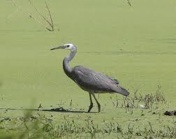 White Ibis and straw neck ibis are the two main birds that live in the wetlands. They build their nests close together in big groups, they also make them on small bushes and use sticks and straw. There are many other species of birds too, such as WA’s Black Swan, Hardhead, Pacific Black Duck, Grey Teal, Musk Duck, Australasian Grebe, Hoary-headed Grebe, Black Cormorant, Pied Cormorant, Black-shouldered Kite and many others that are listed below.
White Ibis and straw neck ibis are the two main birds that live in the wetlands. They build their nests close together in big groups, they also make them on small bushes and use sticks and straw. There are many other species of birds too, such as WA’s Black Swan, Hardhead, Pacific Black Duck, Grey Teal, Musk Duck, Australasian Grebe, Hoary-headed Grebe, Black Cormorant, Pied Cormorant, Black-shouldered Kite and many others that are listed below.
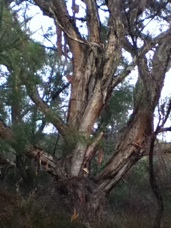 There are many species of plants at the wetlands, some are very rare so it is worth taking a look at them. Some of the plants like the Melaleuca rhaphiophylla tree is a popular nesting place for birds, Coots and dusky moorhens use the hollow branches near the base; It has many horizontal forks which would be perfect for a nest of a darter, cormorant or an ibis. In spring many beautiful wildflowers grow attracting hundreds of insects that get eaten by the brown honeyeaters that have bugs as the main part of their diet.
There are many species of plants at the wetlands, some are very rare so it is worth taking a look at them. Some of the plants like the Melaleuca rhaphiophylla tree is a popular nesting place for birds, Coots and dusky moorhens use the hollow branches near the base; It has many horizontal forks which would be perfect for a nest of a darter, cormorant or an ibis. In spring many beautiful wildflowers grow attracting hundreds of insects that get eaten by the brown honeyeaters that have bugs as the main part of their diet.
Grass trees are very common along the wetlands trail, they are also easily spotted with their bright green colour and their tall flowering spears. The Grass tree is a home to many small insects and small lizards that sun-bake on the spears and when threatened they simply drop off into the pointy leaves below. The tall spears don’t just attract lizards, they also attract honey eater birds and honey eating insects. When the Grass tree dies, native flies put their larvae inside and fungi also grows. After a while all that is left of the plant is its black hollow stem where snakes and lizards then make their home.
Bird List - 2009
Frogs - Hamel Wetland